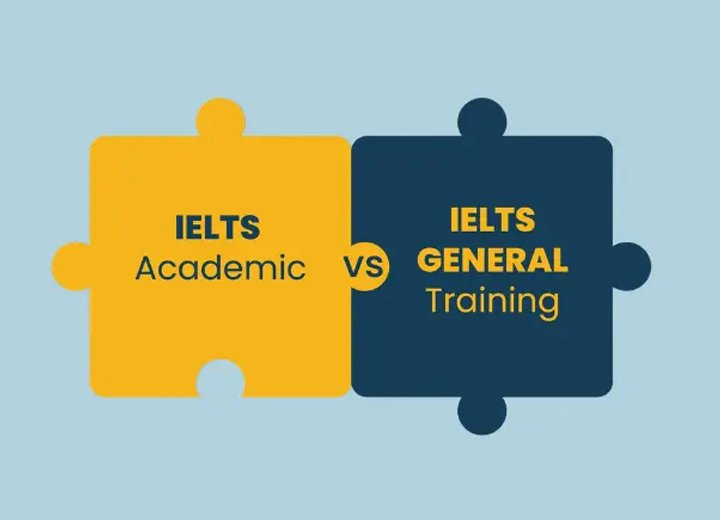The International English Language Testing System (IELTS) is a globally recognised exam designed to assess English proficiency. It is available in two formats: IELTS Academic and IELTS General Training. Choosing the right test depends on your goals—whether you are applying for university admission or seeking work and immigration opportunities in English speaking countries.
Key Differences Between IELTS Academic and IELTS General Training
| Feature | IELTS Academic | IELTS General Training |
| Purpose | Required for university admissions (Bachelor’s, Master’s, PhD) | Primarily for work and immigration purposes |
| Content | Based on academic contexts | Based on everyday situations |
| Modules | Reading, Writing, Speaking, Listening | Reading, Writing, Speaking, Listening |
| Reading Test | Passages sourced from academic journals, books, and research papers | Passages sourced from newspapers, advertisements, and instruction manuals |
| Writing Test | Task 1: Describe visual information (charts, graphs, diagrams) Task 2: Write an essay on an academic topic | Task 1: Write a letter (formal, semi- formal, or informal) Task 2: Write an essay on a general topic |
| Popularity | Preferred by students applying to universities | More common for immigration and work applications |
| Application Fee (India) | INR 17,000 approx. | INR 17,000 approx. |
Test Format Comparison
Reading Section
- Both IELTS Academic and General Training have 60 minutes and 40 questions.
- The question types include matching headings, multiple choice, sentence completion, and flowchart completion.
- The difference lies in the source of reading materials: Academic uses complex texts from research-based sources, while General Training includes content related to daily life and work environments.
Writing Section
IELTS Academic:
- Task 1: Interpret and describe data from a table, graph, or
- Task 2: Write a structured essay on an academic
IELTS General Training:
- Task 1: Write a formal or informal letter (e.g., requesting information, making a complaint).
- Task 2: Write an essay on a topic relevant to everyday
Speaking Section (Same for Both Versions)
- A face-to-face interview with an examiner, lasting 11-14 minutes.
- Part 1: Personal questions (about hobbies, family, work, studies).
- Part 2: A cue card task where candidates speak on a given
- Part 3: A discussion on broader issues related to the topic from Part
Listening Section (Same for Both Versions)
- 30 minutes, followed by 10 minutes to transfer answers.
- Four recordings with different accents and contexts:
- Conversation in a social setting
- Monologue in a general setting
- Discussion among four people in an educational setting
- Academic lecture
Which IELTS Test Should You Take?
- Choose IELTS Academic if you are applying to an English-speaking university or professional registration in a specialised field.
- Choose IELTS General Training if you are moving abroad for work, seeking permanent residency, or applying for immigration.
Final Thoughts
Both IELTS Academic and IELTS General Training assess English proficiency but serve different purposes. It’s crucial to select the right one based on your goals. Preparing with expert guidance can significantly enhance your chances of success.
Need help with IELTS preparation? Get in touch with our expert trainers today!


